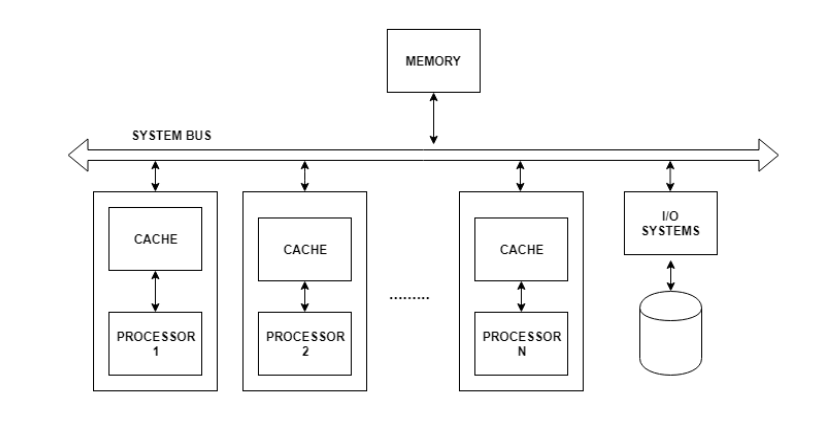
 Data Structure
Data Structure Networking
Networking RDBMS
RDBMS Operating System
Operating System Java
Java MS Excel
MS Excel iOS
iOS HTML
HTML CSS
CSS Android
Android Python
Python C Programming
C Programming C++
C++ C#
C# MongoDB
MongoDB MySQL
MySQL Javascript
Javascript PHP
PHP
- Selected Reading
- UPSC IAS Exams Notes
- Developer's Best Practices
- Questions and Answers
- Effective Resume Writing
- HR Interview Questions
- Computer Glossary
- Who is Who
Symmetric Multiprocessing Architecture
In symmetric multiprocessing, multiple processors work in parallel and share resources like system bus and memory. It is a type of multiprocessing system and much more complex than asymmetric multiprocessing system.
Symmetric Multiprocessing Architecture
The image depicting symmetric multiprocessing architecture is as follows −
Some points explaining the above figure are −
- All the processors in the symmetric multiprocessing architecture contain a common bus and main memory. That is why symmetric multiprocessing is known as tightly coupled multiprocessing.
- Each of the processors in symmetric multiprocessing are equal and can execute different processes as required no matter where these processes are stored in memory. This is a major difference from asymmetric multiprocessing.
- All the processors contain an individual cache in addition to a shared main memory. This allows the processors to access data much faster if it is available in the cache. It also reduces the burden on the system bus as most requests are satisfied by the cache.
Uses of Symmetric Multiprocessing
Some of the uses of symmetric multiprocessing are as follows −
- Symmetric multiprocessing is useful for time sharing systems as these have multiple processes running in parallel. So, these processes can be scheduled on parallel processors using symmetric multiprocessing.
- Symmetric processing is not that useful in personal computers unless multithreaded programming is taken into account. The multiple threads can be scheduled on the parallel processors.
- Time sharing systems that use multithreading programming can also make use of symmetric multiprogramming.

Advertisements

